Introduction
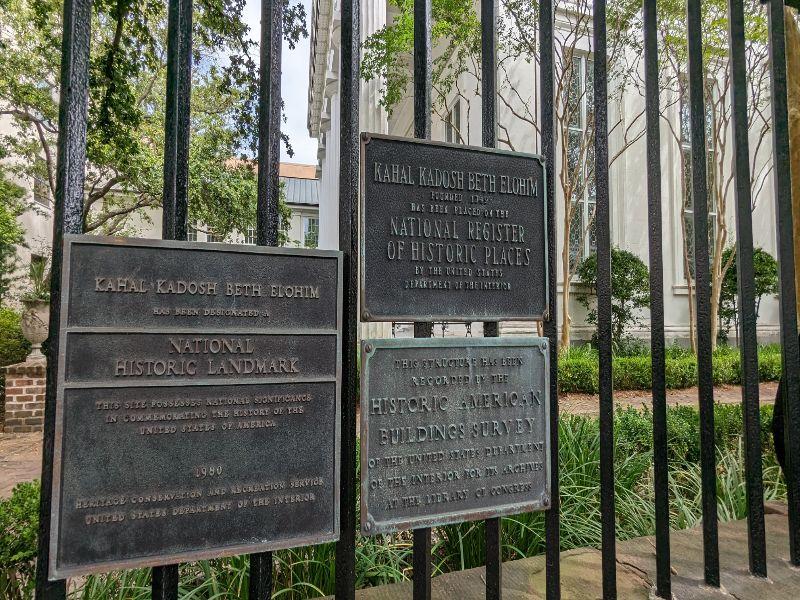
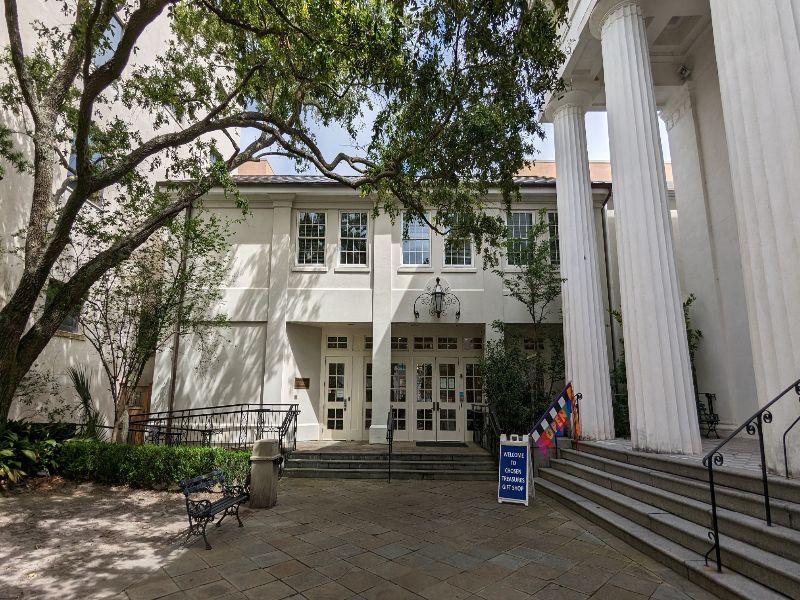
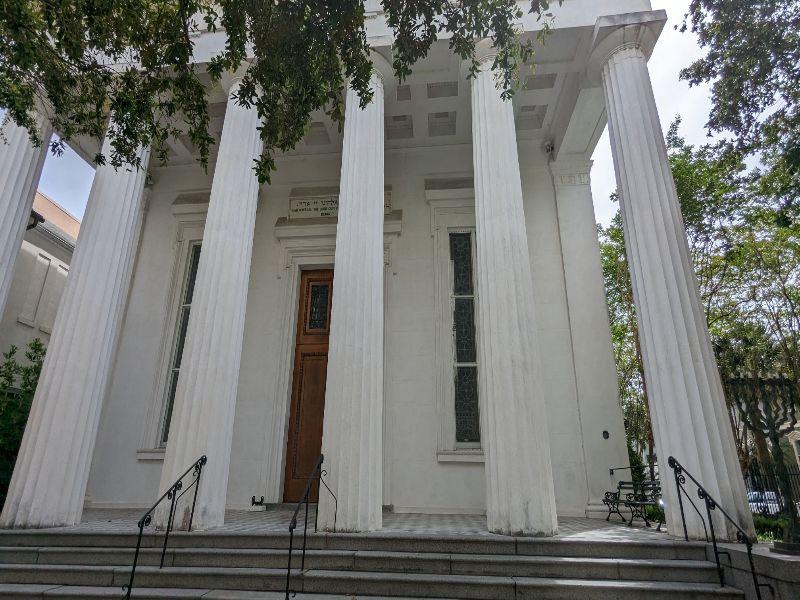
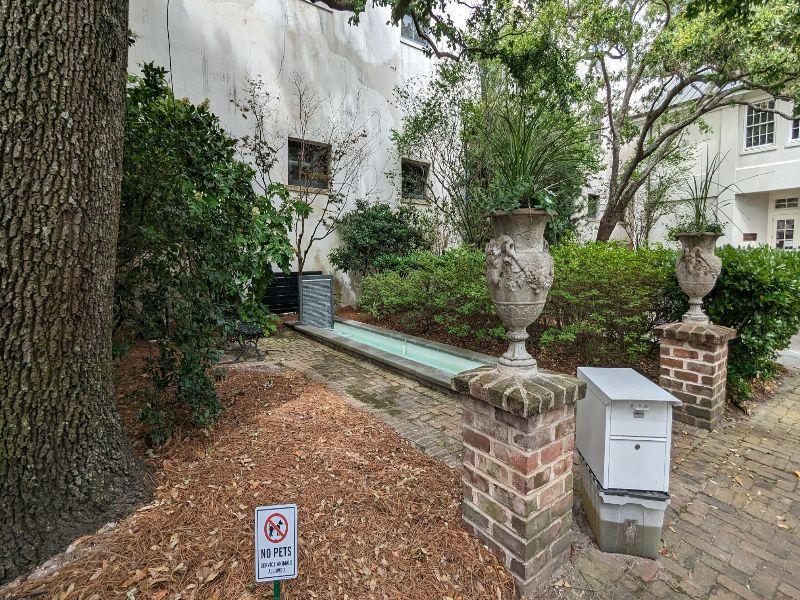
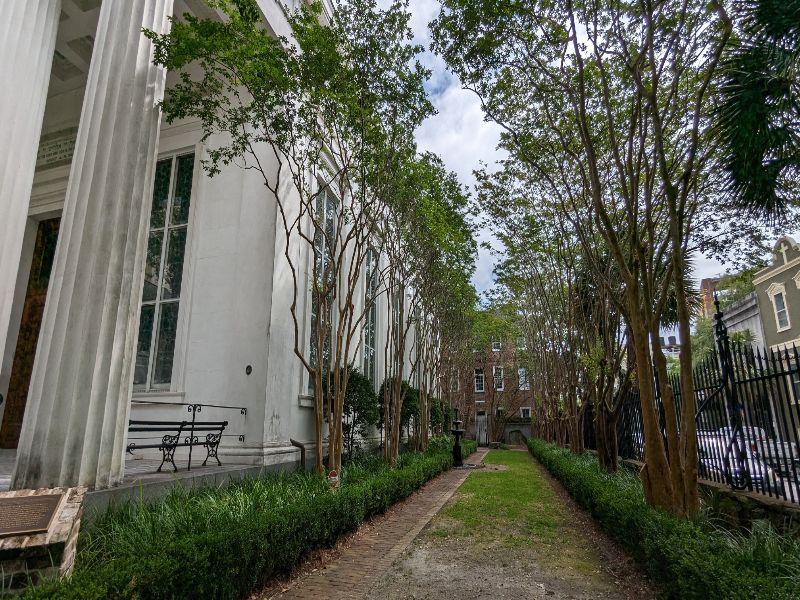
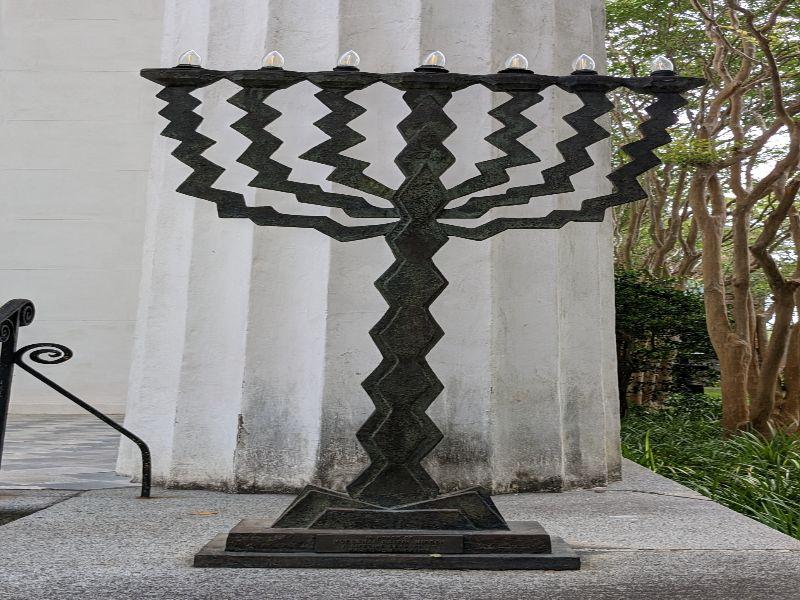
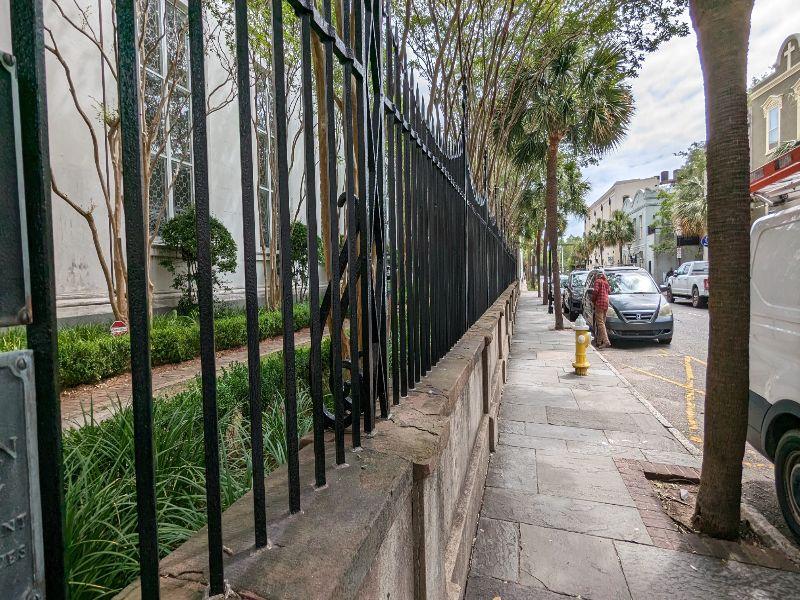
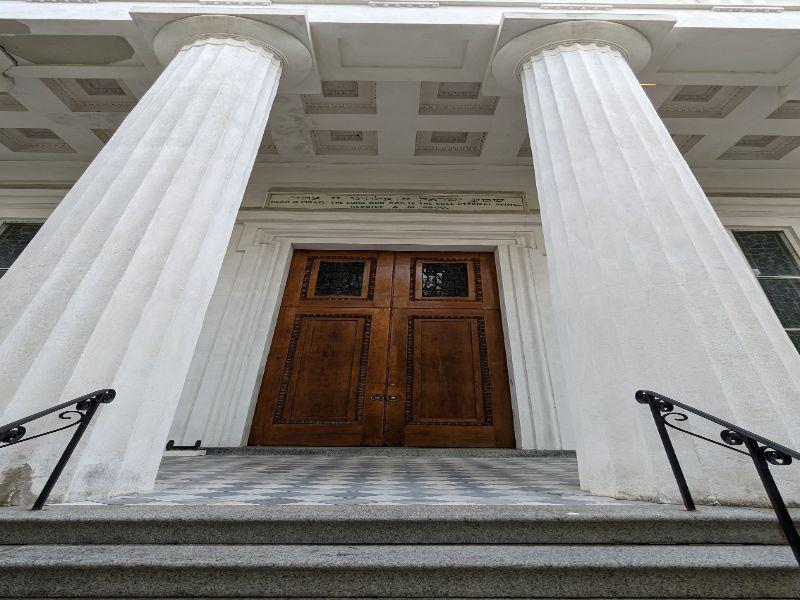
Nestled in the heart of the enchanting southeastern region, our journey through Sephardic synagogues brings us to an exceptional destination: Kahal Kadosh Beth Elohim (KKBE). Steeped in history and dedicated to preserving the rich traditions of Sephardic Judaism, KKBE stands as a testament to resilience, community, and spiritual devotion.
Founded in 1749, KKBE holds the distinction of being the oldest active synagogue in continuous use in the United States. Located in Charleston, South Carolina, this remarkable sanctuary has played an integral role in the vibrant tapestry of American Jewish history, particularly in the context of Sephardic Jewish communities.
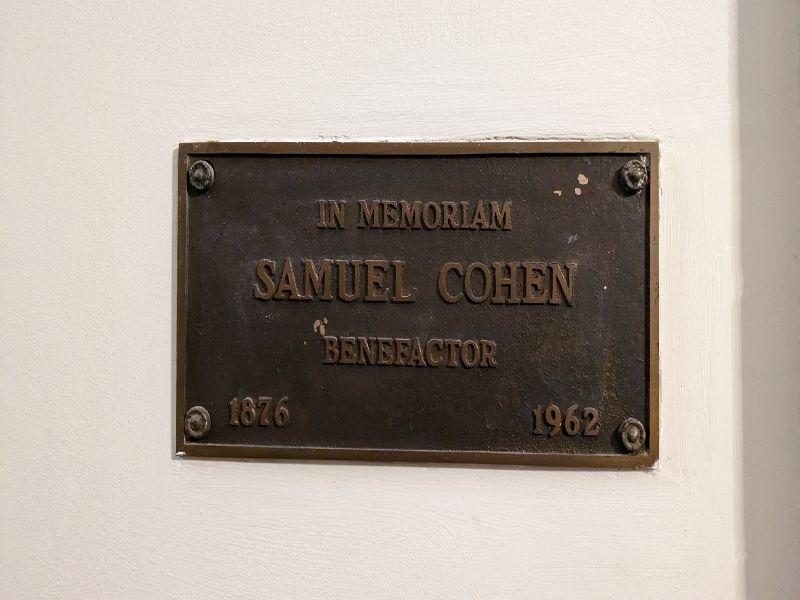
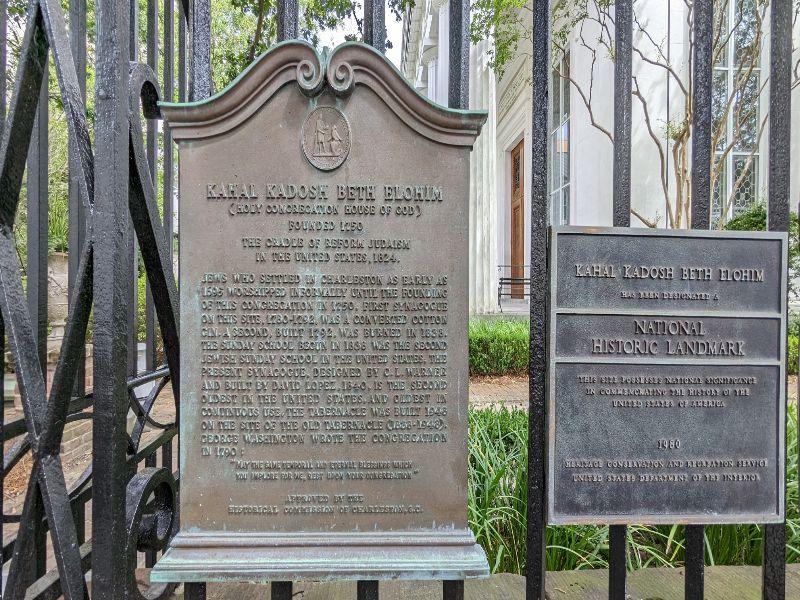
If you’re interested in experiencing the captivating legacy of KKBE firsthand or seeking more information, we invite you to visit their official website at www.kkbe.org. There, you’ll discover a wealth of historical insights, event schedules, and ways to engage with the congregation. For any specific inquiries or to plan your visit, please feel free to contact KKBE directly via phone or email. KKBE eagerly awaits the opportunity to share their rich heritage and warm hospitality with you.
More About KKBE
KKBE’s history intertwines with the remarkable journey of Sephardic Jews, who trace their ancestry to the Iberian Peninsula and found refuge in the New World. As we step into the hallowed halls of KKBE, we are transported to an era that witnessed the flourishing of a diverse and tightly-knit community, where Sephardic traditions found a nurturing home.
The synagogue’s architectural grandeur adds to its allure, blending elements of the Greek Revival and Georgian styles. Its iconic portico, supported by towering columns, welcomes visitors with open arms, inviting them to explore the remarkable stories etched within its walls. From the meticulously crafted stained glass windows to the intricately designed Torah ark, every detail reflects the commitment to preserving Sephardic heritage.
Beyond its architectural splendor, KKBE serves as a vibrant hub for the local Jewish community, fostering a sense of belonging, spirituality, and cultural pride. The synagogue remains an active center for religious services, educational programs, and cultural events that celebrate the enduring traditions of Sephardic Judaism.
Join us as we embark on a captivating exploration of KKBE, unearthing the treasures of Sephardic Jewish history and savoring the timeless spirit of community and faith that continue to resonate within its sacred spaces. Together, let us embrace the heritage, stories, and traditions that shape KKBE and pay homage to the enduring legacy of Sephardic Jewry in the Southeast.
About Kahal Kadosh Beth Elohim Synagogue
KKBE, also known as Kahal Kadosh Beth Elohim, is one of the most esteemed and revered Jewish congregations in the United States. With a rich history dating back over 250 years, KKBE has played a pivotal role in shaping the Jewish community in Charleston, South Carolina, and beyond. As one of the oldest synagogues in the country, KKBE holds immense historical significance and stands as a symbol of resilience, faith, and community.
Established in 1749, KKBE has endured various challenges and triumphs throughout its long and storied history. From its humble beginnings as a gathering place for a small group of Jewish settlers to its present-day prominence, KKBE has remained a steadfast spiritual home for generations of worshippers.
The Historical Significance
The historical significance of KKBE lies not only in its age but also in its role as a beacon of religious freedom and cultural identity. As the oldest continuous Reform congregation in the United States, KKBE has been at the forefront of progressive Jewish thought and practice. It has embraced the principles of Reform Judaism while honoring its traditions and heritage.
KKBE’s influence extends beyond its local community. Its founding members, many of whom were Sephardic Jews, brought with them a rich tapestry of Sephardic customs, traditions, and rituals from their ancestral homelands. These traditions, combined with the evolving practices of Reform Judaism, have shaped the unique identity of KKBE and contributed to its significance within the broader Jewish landscape.
Throughout its history, KKBE has weathered storms, both literal and metaphorical. From surviving fires and hurricanes to navigating societal changes and shifts in religious practices, the congregation has displayed resilience and adaptability. It has remained a pillar of strength and unity for its members, offering spiritual solace, community support, and a sense of belonging.
Today, KKBE continues to thrive as a vibrant and inclusive Jewish community. It welcomes worshippers of diverse backgrounds and beliefs, embracing the values of compassion, justice, and tikun olam (repairing the world). Through its worship services, educational programs, and social initiatives, KKBE embodies the enduring spirit of Jewish tradition and the pursuit of a better world.
In the following sections, we will delve deeper into the remarkable history, architectural beauty, and cultural significance of KKBE. We will explore its role as a bastion of Sephardic heritage and Reform Judaism, as well as its enduring impact on the Charleston community and the wider Jewish diaspora. Join us on this captivating journey through time and faith as we unravel the remarkable story of KKBE.
History of KKBE
The founding of KKBE in the 18th century
KKBE was established in 1749, making it one of the oldest Jewish congregations in the United States. The founding members, a small group of Jewish settlers, sought to create a place of worship and community in Charleston, South Carolina. They laid the foundation for what would become a thriving and influential congregation.
The Sephardic roots of the congregation
The founders of KKBE were a group of Sephardic Jews who sought refuge and religious freedom in Charleston, South Carolina, during the 18th century. Among the prominent founders were individuals like Abraham Da Costa, Isaac Harby, and the Solomon and Moses families. These pioneers hailed from various parts of the Sephardic Jewish diaspora, including Spain, Portugal, and the Caribbean.
The arrival of Sephardic Jews in Charleston can be traced back to the colonial era. Many Sephardic Jews who had been expelled from Spain and Portugal during the Inquisition found their way to England and the Caribbean before eventually settling in Charleston. Seeking a new home where they could practice their faith freely and pursue economic opportunities, these Sephardic Jews made a significant impact on the early Jewish community of Charleston.
The first organized Jewish congregation in Charleston, which later became KKBE, was founded in 1749 by a group of Sephardic Jews. Led by individuals like Abraham Da Costa and Isaac Nunes Cardozo, these early settlers established a place of worship and community where they could maintain their Sephardic customs and traditions.
Discovery of the Cornerstones
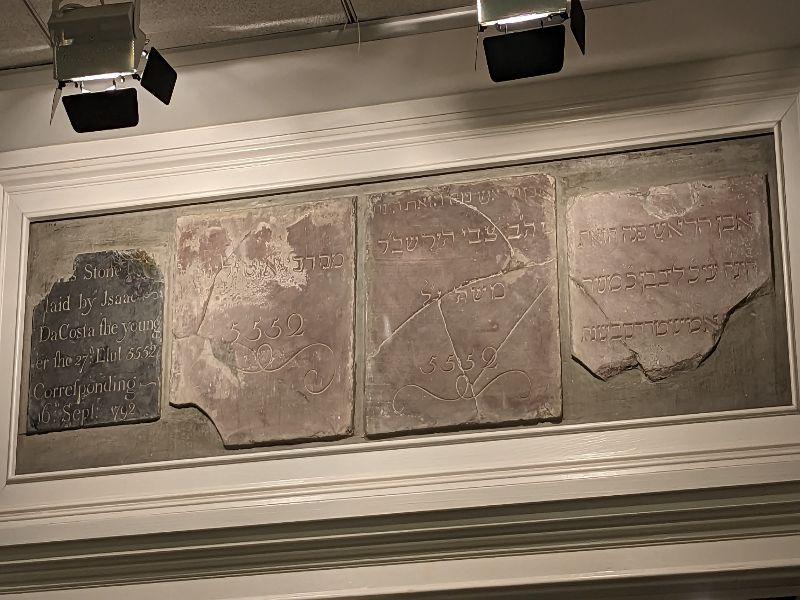
In the process of exploring the rich history of KKBE and the Sephardic community in Charleston, several remarkable cornerstones were discovered. These cornerstones serve as tangible connections to the past, unveiling glimpses of the aspirations, achievements, and resilience of those who came before us.
One such cornerstone was unearthed during the restoration of the synagogue building. It bore the inscription of the original construction date, 1840, and served as a testament to the enduring presence of the Sephardic congregation in Charleston. This cornerstone represents the foundation of a community that has weathered challenges and celebrated triumphs throughout its history.
Another significant cornerstone revealed a later renovation in 1879, a period of growth and transformation for KKBE. This discovery shed light on the dedication of the congregation to adapt and expand their sacred space, reflecting their commitment to maintaining their religious and cultural traditions amidst a changing world.
These cornerstones are more than mere artifacts; they symbolize the indomitable spirit of the Sephardic community. They represent the unwavering commitment to preserving their heritage, even in the face of adversity. Each inscription serves as a silent testament to the generations of individuals who gathered within the walls of KKBE, finding solace, unity, and inspiration in their shared faith.
The discovery of these cornerstones has sparked a renewed sense of pride and reverence within the Sephardic community in Charleston. They serve as tangible links to the past, reminding current and future generations of the strength and resilience of their ancestors. These stones have become touchstones for reflection, inspiring a deeper understanding and appreciation of the journey undertaken by those who came before.
As the cornerstones are carefully preserved and displayed within the synagogue, they stand as reminders of the enduring legacy of the Sephardic community in Charleston. They invite visitors and congregants alike to pause and reflect upon the foundations upon which KKBE was built. Through these cornerstones, the stories of triumph, perseverance, and unity continue to be told, ensuring that the Sephardic pride and heritage thrive for generations to come.
A Rich Sephardic Heritage
These Sephardic Jews brought with them a rich cultural heritage deeply rooted in their Iberian origins. Their religious observance, language, music, cuisine, and social customs reflected the distinct traditions of Sephardic Jewry. The Sephardic influence within KKBE and the wider Jewish community of Charleston was profound, shaping the congregation’s identity and character.
Over the years, the congregation grew in numbers and influence, attracting Sephardic Jews from other parts of the United States and the world. KKBE became a center of Sephardic culture and a beacon of Jewish life in Charleston.
The journey of the Sephardic Jews to Charleston was one marked by resilience, determination, and the pursuit of religious freedom. Their arrival and subsequent founding of KKBE established a lasting legacy that continues to thrive today. The Sephardic roots of KKBE serve as a testament to the enduring strength and vibrancy of Sephardic Jewry and its profound impact on the Jewish community of Charleston.
Notable milestones and challenges throughout its history
Over the years, KKBE has faced numerous milestones and challenges that have shaped its trajectory. In 1794, the congregation moved into its first permanent synagogue, a grand structure that showcased their commitment to their faith and the growing Jewish community in Charleston. However, tragedy struck in 1838 when a devastating fire destroyed the synagogue, testing the resilience of the congregation.
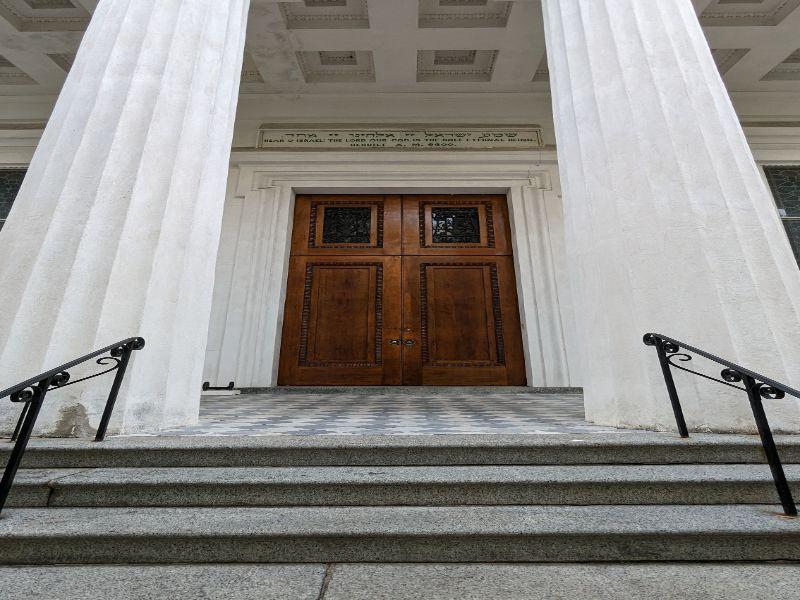
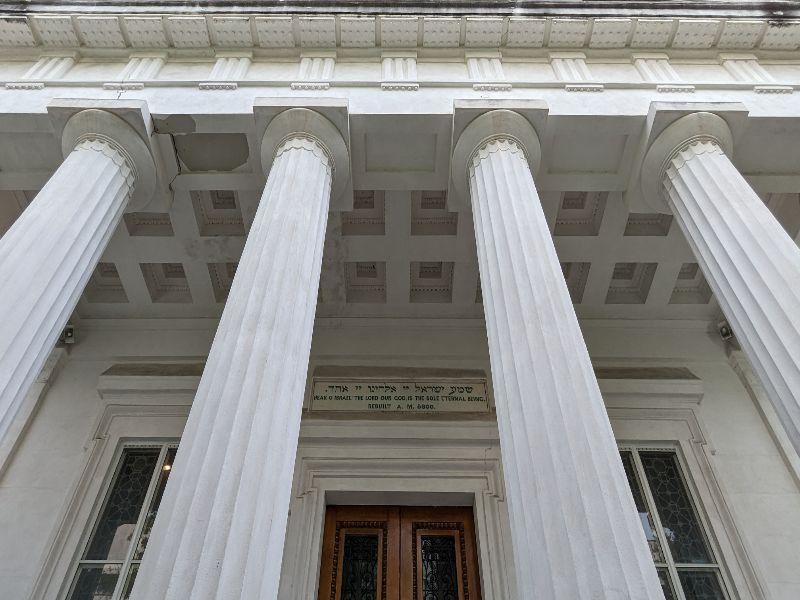
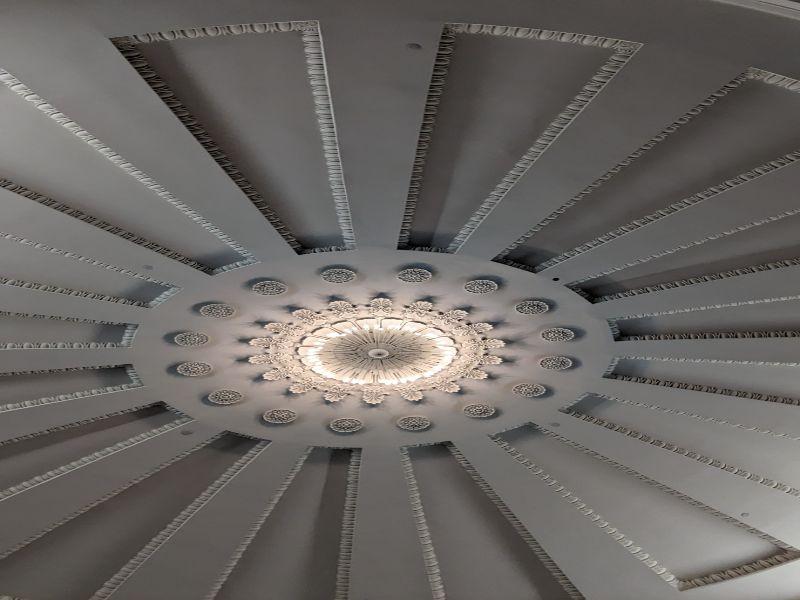
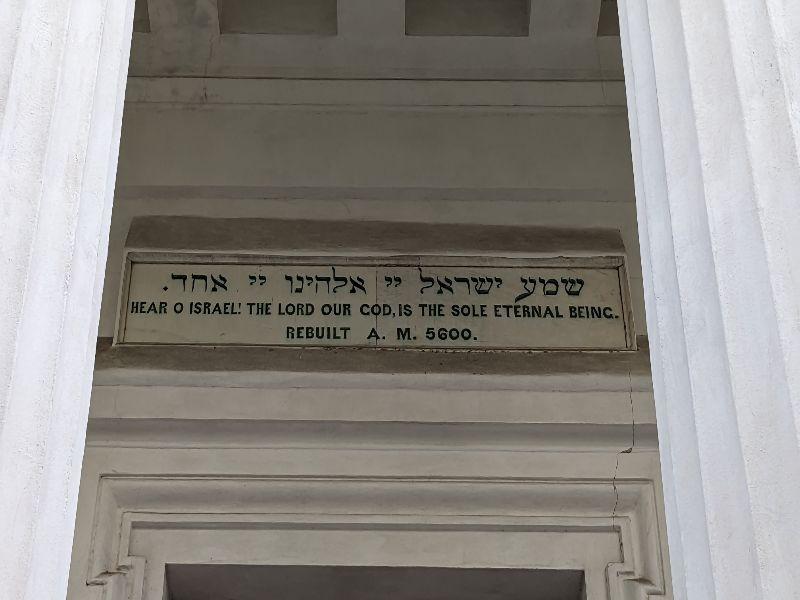
Despite the challenges, KKBE’s spirit remained unbroken. The congregation rallied together to rebuild, and in 1840, a magnificent new synagogue was erected in the Greek Revival architectural style. This iconic structure, known as the “Gibraltar of American Jewry,” still stands today as a testament to the perseverance and dedication of the KKBE community.
KKBE also played a significant role in the advancement of Reform Judaism in America. In the mid-19th century, the congregation embraced the principles and practices of Reform Judaism, adapting to the changing times and evolving religious landscape. This transition sparked both enthusiasm and controversy within the Jewish community, but KKBE remained steadfast in its commitment to progressive Jewish thought.
Throughout its history, KKBE has remained a vibrant and dynamic congregation, adapting to the needs of its members and the wider Jewish community. It has stood as a voice for social justice and equality, advocating for civil rights and working to make a positive impact on society.
The journey of KKBE is one filled with triumphs, challenges, and an unwavering commitment to faith and community. As we delve deeper into the remarkable story of KKBE, we will discover the architectural beauty of its synagogues, explore its impact on the Charleston community, and uncover the enduring legacy of this historic congregation.
Architecture and Synagogue Building
The architectural style of the synagogue building
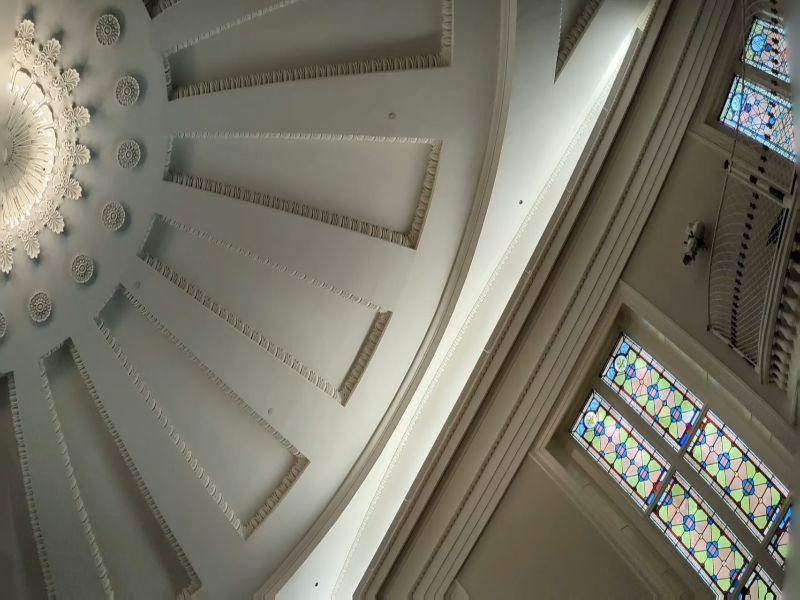
KKBE’s synagogue building is a remarkable testament to architectural excellence and historical significance. The structure showcases a blend of architectural styles that reflect the congregation’s evolving identity and the cultural landscape of Charleston. It is primarily influenced by the Greek Revival style, which was popular during the mid-19th century when the current building was constructed.
Unique features and design elements
The synagogue building of KKBE boasts several unique features and design elements that make it a notable architectural landmark. The exterior façade is characterized by grand columns and a pediment, which evoke a sense of classical elegance. The interior is equally stunning, with a spacious sanctuary adorned with intricate woodwork, stained glass windows, and a beautiful bimah (the raised platform from which prayers are led).
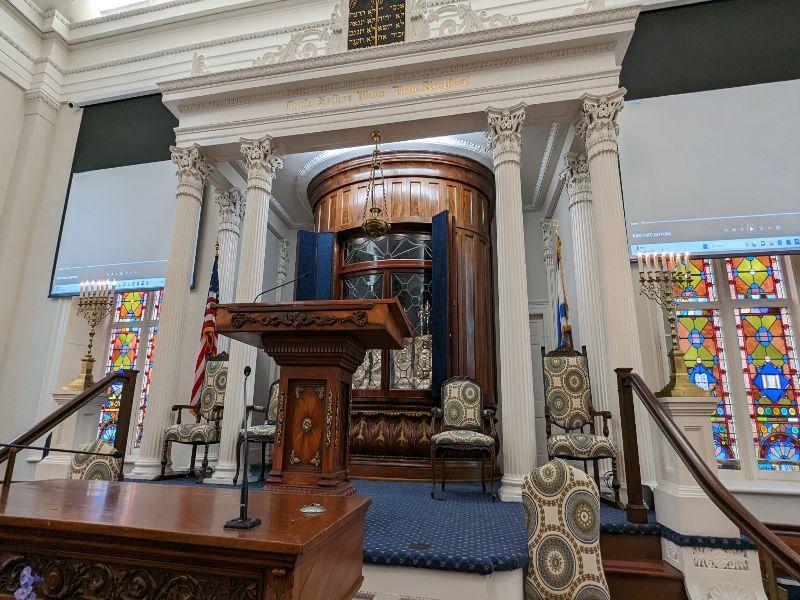
One notable feature is the stunning rose window that graces the front of the synagogue. This intricate stained glass window not only adds to the visual appeal of the building but also holds symbolic meaning for the congregation. Its colorful depiction of Jewish symbols and biblical scenes serves as a constant reminder of the congregation’s faith and heritage.
Significance of the building in the context of the congregation’s history and heritage
The synagogue building holds immense significance in the history and heritage of KKBE. It stands as a physical representation of the congregation’s commitment to their faith and their enduring presence in Charleston. The architectural beauty of the building serves as a reminder of the congregation’s resilience in the face of challenges and their dedication to preserving their Jewish identity.
Furthermore, the synagogue building has served as a gathering place for generations of KKBE members, hosting religious services, lifecycle events, and communal celebrations. It has witnessed moments of joy, reflection, and unity, fostering a sense of belonging and connection among the congregation.
The synagogue building also holds historical and cultural value for the broader Charleston community. It is recognized as an architectural gem and a symbol of religious freedom, representing the city’s diverse cultural heritage. The building has been designated as a National Historic Landmark, further solidifying its importance as a tangible link to the past and a source of pride for both the congregation and the community at large.
The architecture and synagogue building of KKBE stand as a testament to the congregation’s history, heritage, and devotion. Its unique design elements and remarkable features contribute to the beauty and significance of the structure, making it a cherished symbol of faith, community, and cultural legacy.
Religious Practices and Traditions
KKBE, originally founded as a Sephardic congregation, has undergone changes over time and is now affiliated with the Reform movement. While the congregation’s religious practices and traditions have evolved, it still acknowledges and respects its historical Sephardic roots.
KKBE’s religious practices and rituals reflect the Reform orientation of the congregation. Services are conducted in a combination of Hebrew and English, accommodating the diverse backgrounds and preferences of its members. The congregation follows a contemporary approach to Judaism, embracing modern interpretations and adapting traditional practices to fit the needs of its community.
While the influence of Sephardic customs may not be as prominent as it once was, KKBE recognizes the significance of its historical connection to the Sephardic heritage. The congregation may organize occasional events or programs to commemorate and celebrate its Sephardic roots, providing educational opportunities for members to learn about and appreciate the distinctive aspects of Sephardic Jewish traditions.
It is important to note that the transition from a strictly Sephardic congregation to a Reform synagogue has resulted in a shift away from traditional Sephardic liturgy and customs. This change may be viewed as a downside by those who value the preservation of Sephardic traditions.
While the shift to Reform Judaism may have resulted in a departure from traditional Sephardic practices, it is important to recognize that KKBE’s commitment to preserving its historical connection to the Sephardic heritage reflects an ongoing appreciation for its origins. By maintaining an awareness of its Sephardic roots, KKBE ensures that the legacy of its founders continues to be honored and respected within the framework of its evolving religious practices.
Learn more about the split at Mapping Jewish Charleston.
Community Engagement and Outreach
At KKBE, community engagement and outreach are at the heart of their mission. The congregation actively seeks to make a positive impact on the local community of Charleston and beyond. Through various initiatives and programs, KKBE demonstrates its commitment to social justice, education, and fostering meaningful connections with others.
Involvement in the Local Community
KKBE plays an integral role in the fabric of the Charleston community. The congregation actively engages with local organizations, fostering partnerships and collaborations that aim to address social issues and promote inclusivity. Whether it’s participating in interfaith events, supporting local charitable organizations, or engaging in community service projects, KKBE members are dedicated to making a difference in the lives of those around them.
Social Justice Initiatives and Charitable Work
KKBE is deeply committed to social justice and charitable endeavors. The congregation understands the importance of Tikkun Olam, the Jewish principle of repairing the world, and translates it into action. Through advocacy, fundraising, and hands-on volunteer work, KKBE actively supports initiatives that promote equality, justice, and compassion.
From organizing food drives for local food banks to supporting initiatives aimed at combating poverty and homelessness, KKBE’s charitable work extends beyond the walls of their synagogue. By addressing societal challenges and extending a helping hand to those in need, the congregation embodies the values of compassion and empathy.
Educational Programs, Events, and Partnerships
KKBE is dedicated to fostering a culture of lifelong learning and intellectual growth. The congregation offers a range of educational programs and events that cater to various age groups and interests. From religious education classes for children and teenagers to adult learning opportunities, KKBE provides a nurturing environment for individuals to deepen their knowledge of Jewish traditions, history, and values.
Furthermore, KKBE actively seeks partnerships with educational institutions and organizations to promote interfaith dialogue, cultural understanding, and community enrichment. Collaborations with schools, universities, and community centers create opportunities for shared learning, mutual respect, and the celebration of diversity.
Through their engagement in the local community, dedication to social justice, and commitment to education, KKBE exemplifies the essence of a vibrant and involved congregation. By embodying the values of compassion, inclusivity, and learning, KKBE continues to make a lasting impact on both the Jewish community and the broader Charleston community as a whole.
Notable Figures and Contributions
Throughout its rich history, KKBE has been fortunate to have had notable individuals who made significant contributions to the congregation and the broader Jewish community. These individuals have left a lasting impact, shaping the identity and spirit of KKBE.
Abraham Da Costa
Abraham Da Costa, a prominent figure in the Sephardic community, was born in the early 18th century. He came from a lineage of Sephardic Jews who had settled in Charleston, South Carolina, seeking religious freedom and economic opportunities. Da Costa was actively involved in the growth and development of the Sephardic congregation, Kahal Kadosh Beth Elohim (KKBE). As a dedicated leader, Da Costa served as a warden and trustee of the synagogue, working tirelessly to ensure the preservation of Sephardic customs and traditions.
Isaac Harby
Isaac Harby, born in 1788, was a notable figure in the Sephardic community of Charleston. He was the son of Moses and Rachel Harby, both prominent members of the congregation. Isaac Harby played a significant role in promoting Sephardic pride and identity through his career as a writer and educator. He became a well-respected journalist, contributing articles to newspapers and magazines, where he often advocated for the recognition of Sephardic history and traditions. Harby’s influence extended to the field of education, as he served as a teacher and principal, imparting knowledge and fostering a sense of cultural pride among his students.
David Lopez
David Lopez, born in the late 18th century, was a revered member of the Sephardic community in Charleston. His family had a long-standing history in the city, tracing their roots back to Sephardic Jews who settled there in the 17th century. Lopez made significant contributions as a philanthropist and community leader, using his wealth and influence to support educational initiatives and charitable causes. He was a strong advocate for the importance of education, establishing scholarships and funding schools that benefited the Sephardic community and the wider Charleston society.
The Solomon and Moses families
The Solomon and Moses families were instrumental in shaping the Sephardic community in Charleston. They were among the earliest Jewish settlers in the city and played vital roles in the establishment and growth of KKBE. These families, through their dedication to their faith and community, upheld Sephardic customs and traditions. Many members of the Solomon and Moses families served in the military, demonstrating their commitment to the ideals of the new world they had embraced. Their military service reflected their sense of pride in being part of a nation that valued freedom and equality, and it showcased their deep-rooted connection to both their Sephardic heritage and their new American identity.
The military service of individuals from these families exemplified their devotion to their newfound home and their willingness to defend the principles they held dear. Their sense of pride for this new world was intertwined with their commitment to their faith, community, and the larger society they were part of. Through their contributions, both within and outside the military, the Sephardic community in Charleston flourished, leaving a lasting legacy of strength, resilience, and pride.
More Influential Leaders
In addition to these influential leaders, KKBE has been blessed with inspiring community members who have made noteworthy contributions. One such individual is Rebecca da Silva, a philanthropist known for her charitable acts and support for various social causes. Her generosity and compassion have had a transformative impact on the lives of countless individuals in the community.
Furthermore, KKBE has been home to talented artists, scholars, and professionals who have excelled in their respective fields while actively participating in the congregation’s activities. Their achievements have brought honor not only to themselves but also to the congregation as a whole.
These notable figures and community members have left a lasting legacy, not only within KKBE but also in the broader Jewish community. Their contributions, whether through leadership, education, philanthropy, or personal achievements, have helped shape the vibrant and inclusive nature of KKBE.
The stories serve as a source of inspiration for current and future generations, reminding us of the importance of community engagement, leadership, and the pursuit of excellence. Their dedication and commitment to the values of the congregation continue to inspire and guide KKBE as it moves forward, ensuring the preservation of its rich history and the flourishing of its vibrant community.
Preservation of Heritage
Preserving and honoring its Sephardic heritage is a paramount priority for KKBE. The congregation takes great pride in its historical connection to the Sephardic Jewish community and strives to ensure that these traditions and customs are cherished and passed on to future generations.
Efforts to preserve the Sephardic heritage at KKBE are multifaceted. The congregation has established a dedicated committee that focuses on researching, documenting, and promoting the rich legacy of Sephardic Jewry. This committee, consisting of passionate individuals with deep knowledge and appreciation for Sephardic traditions, works tirelessly to organize events, educational programs, and workshops that celebrate and uphold the unique customs and rituals of Sephardic Judaism.
A Commitment to Preserving its Heritage

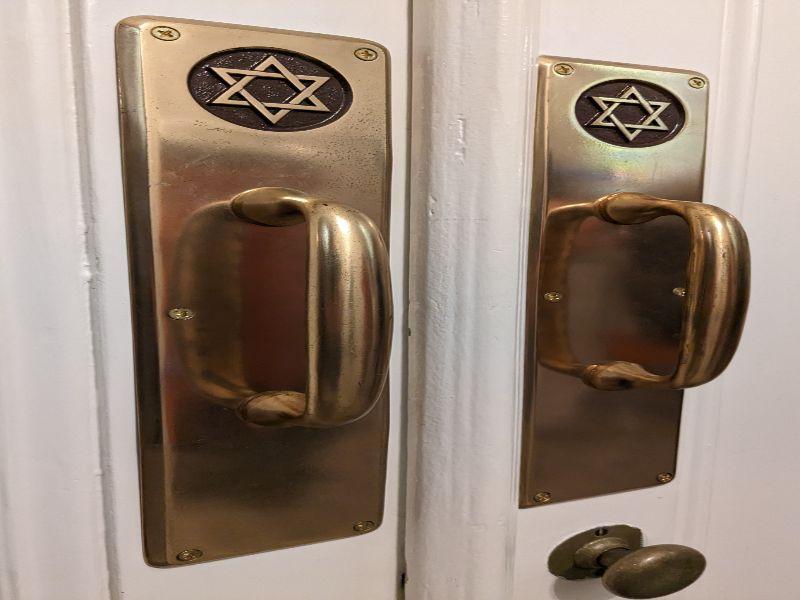
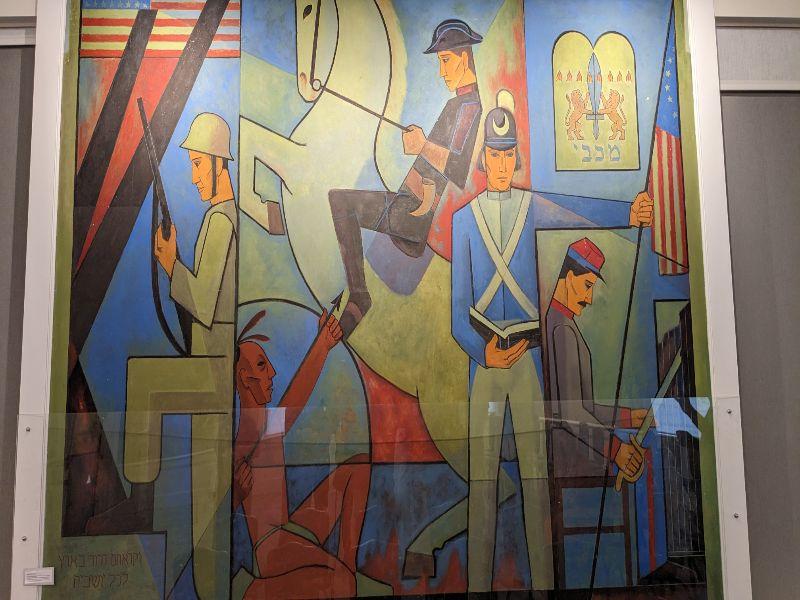
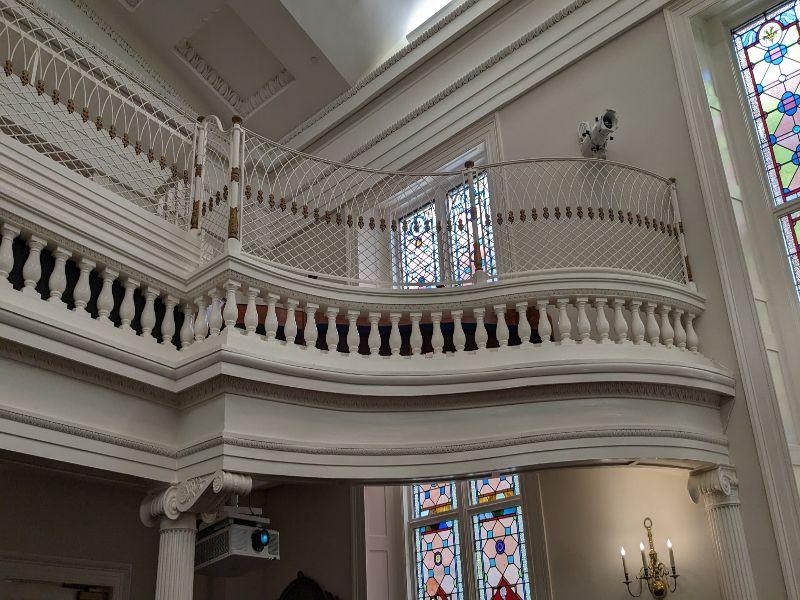
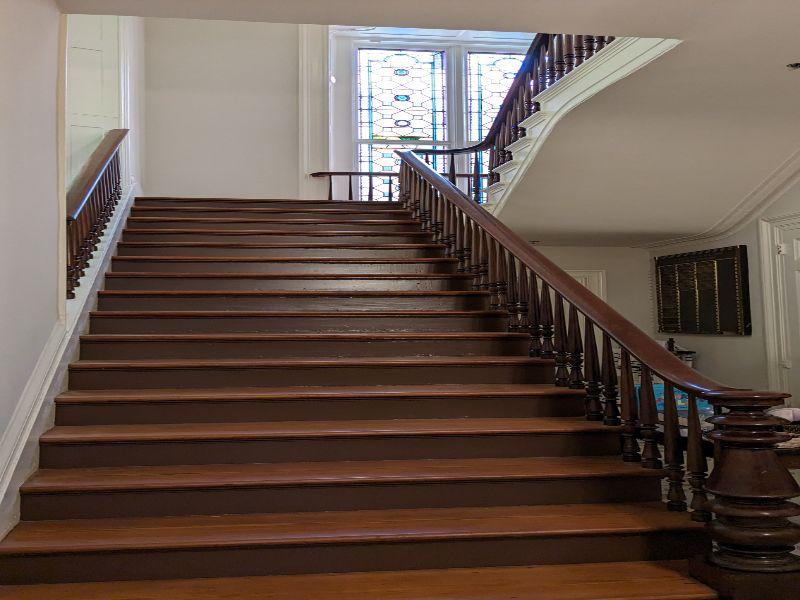
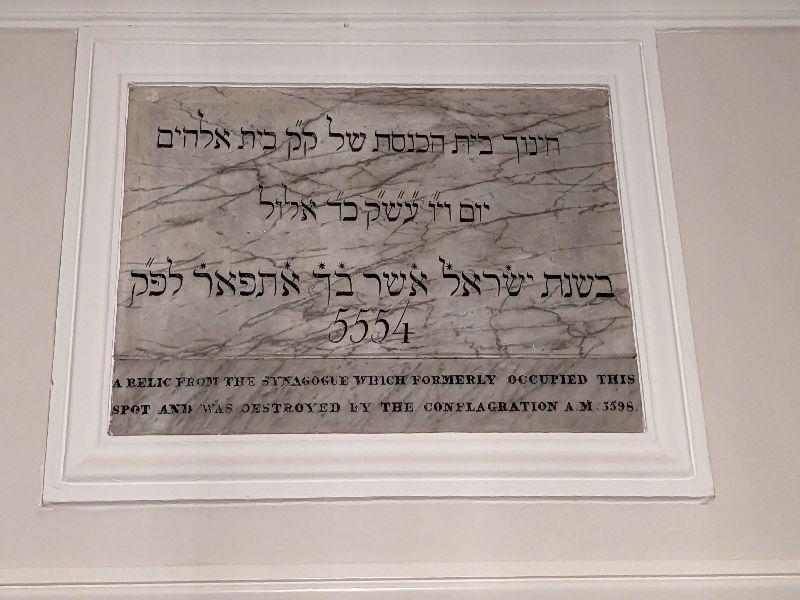
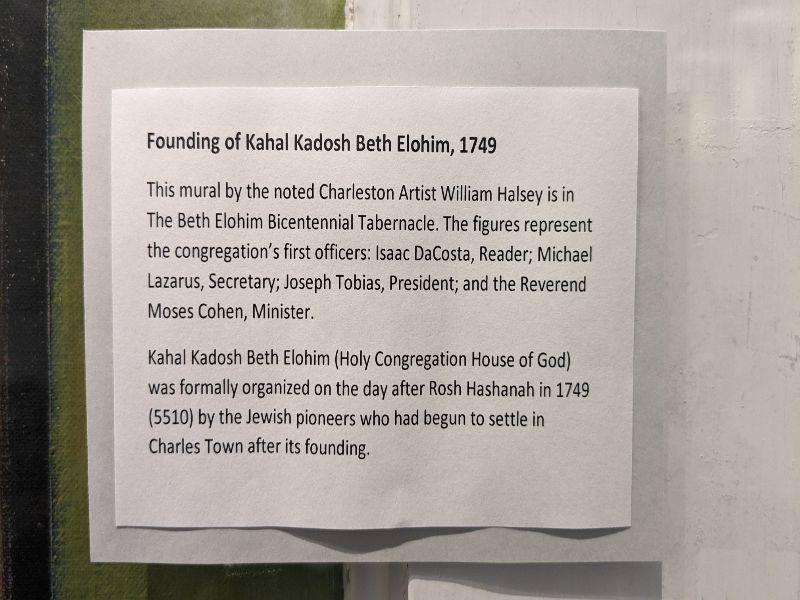

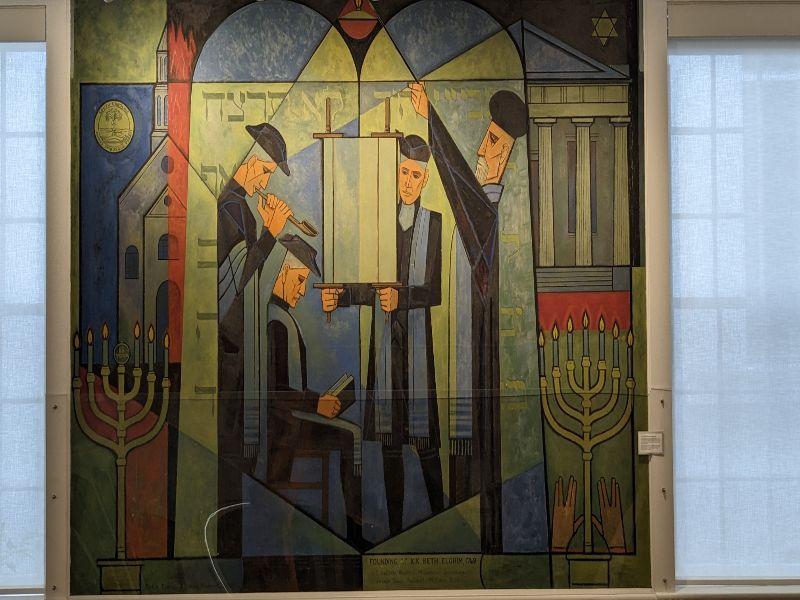

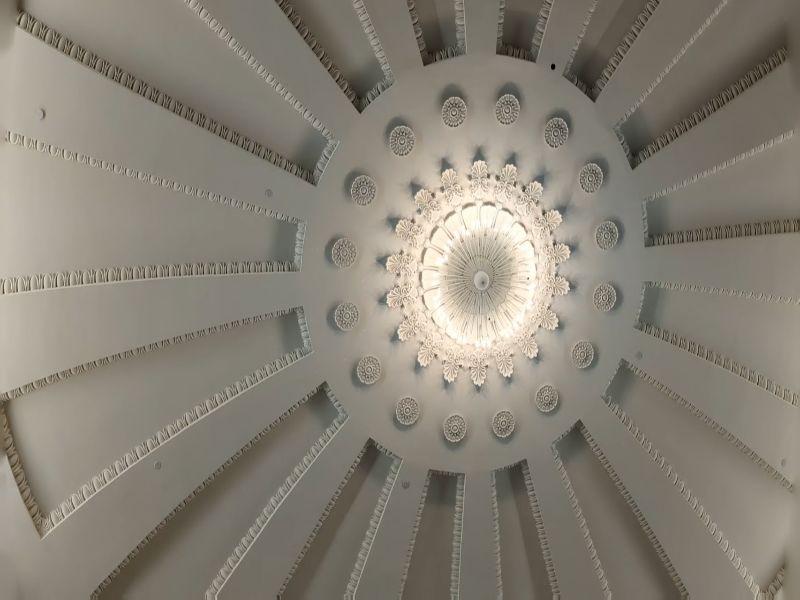
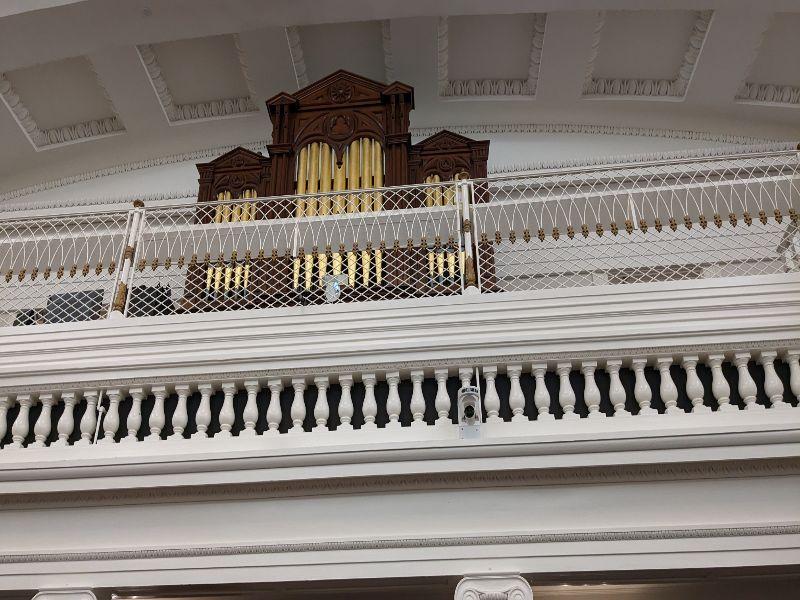
KKBE’s commitment to preserving its heritage is further demonstrated through the establishment of a museum and archival collections. The museum houses a remarkable collection of artifacts, photographs, and documents that provide a glimpse into the history and cultural practices of the Sephardic Jewish community in Charleston. Visitors have the opportunity to explore the displays and learn about the contributions and experiences of the early Sephardic settlers.
In addition to the museum, KKBE maintains an extensive archival collection that serves as a valuable resource for researchers and scholars interested in studying the Sephardic heritage. These archival materials, including historical records, manuscripts, and personal narratives, help preserve the stories and experiences of the Sephardic Jews who played a vital role in shaping the congregation and the broader Jewish community.
KKBE also offers a range of initiatives and programs aimed at preserving and passing on the traditions to future generations. These include Sephardic cooking workshops, where participants learn to prepare traditional Sephardic dishes and gain insights into the cultural significance of the cuisine. The congregation also organizes workshops on Sephardic music and dance, allowing individuals to immerse themselves in the vibrant melodies and movements that have been passed down through generations.
Furthermore, KKBE actively engages younger members of the community through educational programs that emphasize the importance of Sephardic heritage. These programs aim to instill a sense of pride and appreciation for their cultural roots, encouraging the next generation to carry forward the traditions and values of their ancestors.
Through these endeavors, KKBE ensures that the Sephardic heritage remains alive and vibrant within the congregation. The commitment to preserving and passing on these traditions not only strengthens the sense of identity and belonging among the community members but also contributes to the broader tapestry of Sephardic Jewish heritage in the United States.
Conclusion
KKBE stands as a testament to the rich Sephardic heritage that has shaped the fabric of American Judaism. As one of the oldest Jewish congregations in the United States, KKBE holds a special place in history and continues to play a vital role in preserving and honoring its Sephardic roots.
The congregation’s journey from its founding in the 18th century to its present-day status as a thriving community reflects the resilience and determination of the early Sephardic settlers who sought refuge in Charleston. Their arrival marked the beginning of a vibrant Sephardic presence in the region, leaving an indelible imprint on the congregation’s identity and traditions.
KKBE’s ongoing commitment to its Sephardic heritage is evident in its religious practices, preservation efforts, and community engagement. By embracing the unique customs, liturgy, and cultural elements of Sephardic Judaism, KKBE ensures that the legacy of its founding members endures. Through the years, the congregation has weathered challenges, celebrated milestones, and remained a steadfast pillar of Sephardic Jewish life in Charleston.
A Living Testament
As a living testament to the Sephardic legacy, KKBE welcomes visitors to experience its rich history and vibrant community. Exploring the synagogue’s architectural beauty, engaging with its museum and archival collections, and attending religious services offer glimpses into the unique world of Sephardic Judaism. Visitors have the opportunity to witness firsthand the passion, warmth, and commitment that embody the spirit of KKBE.
To fully appreciate the depth and significance of KKBE, it is encouraged to delve deeper into the congregation’s history, explore its initiatives, and engage with its community members. By doing so, one can gain a profound understanding of the enduring impact of Sephardic Jews in Charleston and the broader American Jewish narrative.
In visiting KKBE or immersing oneself in its stories and traditions, individuals can connect with a living link to the Sephardic past, finding inspiration and renewed appreciation for the resilience, heritage, and enduring spirit of the Sephardic Jewish community.
KKBE remains a shining example of how a historic Sephardic congregation continues to thrive, evolve, and serve as a beacon of Jewish identity, unity, and heritage. Its story continues to unfold, with each generation adding new chapters to the narrative of Sephardic Judaism in America.
(Uncover a wealth of Sephardic synagogues in the Southeast, including the iconic Mickve Israel, and explore their rich heritage.)

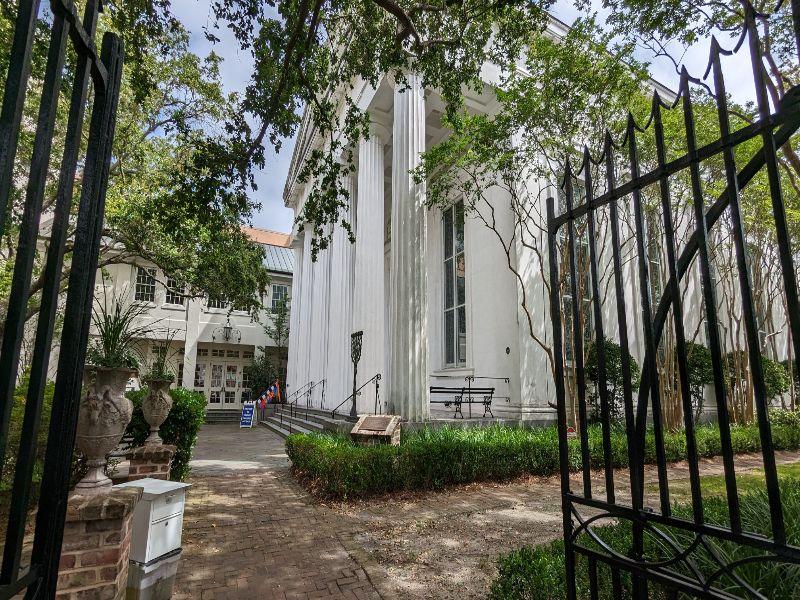






Ohr HaChaim Yomi – Emor